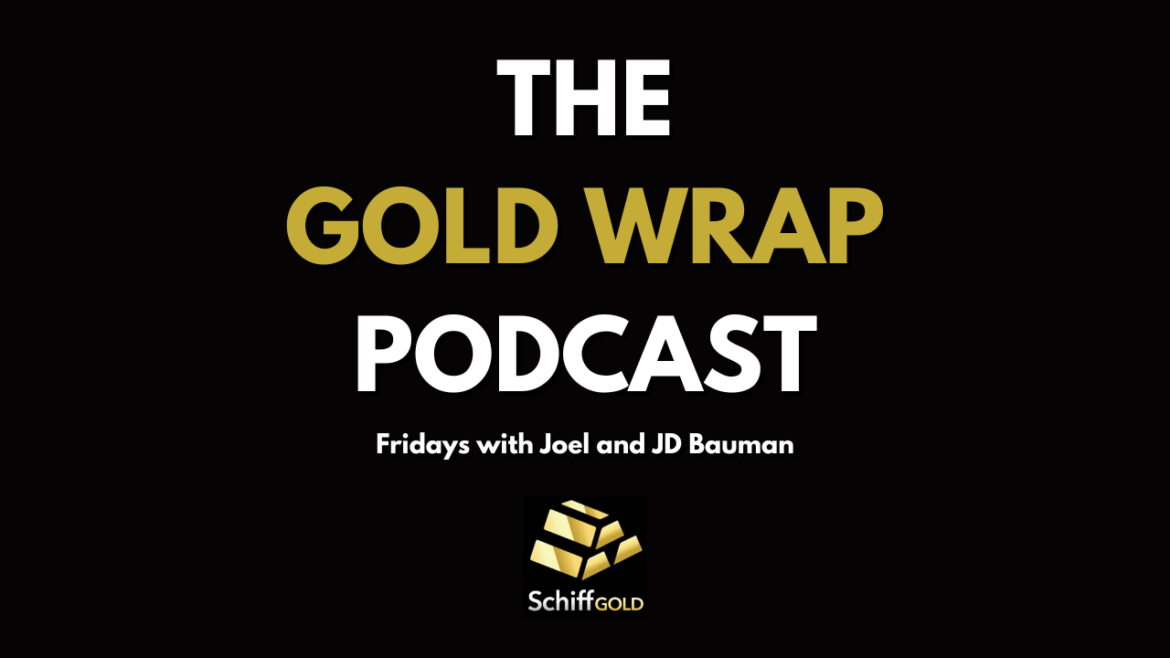Precious metals are apparently waking up. And here is where you can find the best deals.
Site:
Precious metals news
In the 2024 World Economic Forum in Davos, global leaders grappled with what's termed a "polycrisis," encompassing escalating geopolitical tensions, economic challenges, and climate change impacts. The interconnected nature of these crises, such as the impact of Houthi attacks on global shipping and drought-induced shipping limitations through the Panama Canal, exemplify how multiple crises are exacerbating each other. The situation in Gaza and ongoing conflicts in the Middle East, combined with high-stakes elections worldwide in 2024, add layers of complexity to the global economic landscape. Amidst these challenges, AI's emergence as a pivotal technological advancement was a key focus, highlighting the need for effective regulation and understanding of its global impact.
 A Pivotal Week for Stock Markets: Earnings, Fed Decisions, and Job Reports
A Pivotal Week for Stock Markets: Earnings, Fed Decisions, and Job ReportsJan 29, 2024 - 06:29:33 PST
This week is pivotal for stock markets, with a series of significant events on the horizon. Major tech giants like Microsoft and Apple are set to release their earnings reports, which could influence market dynamics. Additionally, the Federal Reserve's interest rate decision is eagerly awaited, with potential implications for future rate cuts. Moreover, the release of the January jobs report will provide critical insights into the labor market's health, influencing the Fed's rate cut schedule. These events collectively could set the tone for the stock market's direction in the coming weeks.
In a remarkable shift from the grim predictions of a year ago, the Federal Reserve is now weighing the possibility of interest rate cuts. Despite the raised rates to combat inflation, the economy defied expectations by avoiding a recession and maintaining a robust state. This unexpected surge has left Fed officials in a quandary about their next steps. While they previously anticipated rate reductions in 2023, the exact timing remains shrouded in uncertainty. The focus is now on whether these cuts will be announced as early as the Fed's upcoming March meeting or delayed till May or June. The current economic landscape, along with the upcoming presidential election, adds complexity to these decisions. Interestingly, inflation has cooled down, aligning with the Fed's target, fostering speculation about imminent rate cuts.
The Currency Heat Map is a valuable tool for understanding the relative strengths of major currencies in the forex market. It helps in distinguishing between actual currency strength and misleading trends caused by the weakness of other currencies. This perspective is crucial for accurate market analysis and making informed trading decisions
 Federal Reserve's Anticipated Moves and Corporate Earnings Drive Market Watch
Federal Reserve's Anticipated Moves and Corporate Earnings Drive Market WatchJan 29, 2024 - 06:08:48 PST
The financial market this week will be influenced by the Federal Reserve's meeting outcomes, key tech company earnings, and the January jobs report. Investors and analysts are closely observing these factors, as they can significantly impact the interest rate environment and overall market trends. The upcoming jobs report is especially critical, with expectations of 175,000 nonfarm payroll jobs added last month in the U.S.
Mike Maloney has made several moves in his portfolio, one of which he admits could be deemed as ‘completely crazy’.
Federal regulators are plotting a course that could see America's sturdiest banks tied to a sinking lifeboat. This plan, designed to compel banks to use the Federal Reserve's discount window, aims to normalize the act of reaching for this financial lifeline amidst turbulent seas. It's as if the Fed is asking the healthiest swimmers to don faulty life jackets first, in a bid to make them seem less alarming to those already struggling to stay afloat. Our guest commentator explains why this strategy, while intended to fortify the banking sector against future storms, would endanger all US banks.
Proverbs 22:7, ‘The borrower is servant to the lender,' has resonated in the background of my financial upbringing.Akin to other proverbs and parables (Proverbs 1:6), there’s much more beneath the surface worth pondering.
The Federal Reserve's primary inflation gauge, the core personal consumption expenditures (PCE) price index, maintained a steady pace in the fourth quarter, aligning with expectations and supporting a buoyant stock market. The Commerce Department data revealed that the U.S. GDP growth slowed less than anticipated, with the core PCE price index rising at an annual rate of 2% in Q4. This consistency, marking the second consecutive quarter of 2% annualized inflation, aligns with the Federal Reserve's target and follows higher increases earlier in the year. The news, indicating manageable inflation levels, bolstered investor optimism and led to a solid rise in the S&P 500, which achieved another record closing high.
Jan 26, 2024 - 12:29:13 PST
Gary Gensler, the chair of the U.S. Securities and Exchange Commission (SEC), has advocated for the incorporation of foreign exchange markets into the global initiative to shorten trade settlement times. Speaking at an event in Brussels, Gensler proposed reducing the timeframe for finalizing financial market deals, including currency trades, to a single day. This suggestion aligns with comments from Mairead McGuinness, the EU's top financial services official, who indicated the EU's intention to transition securities settlements to a one-day window.
December's core personal consumption expenditures (PCE) price index, the Federal Reserve's favored measure of inflation, indicated a significant easing of price pressures. The index, which excludes the often fluctuating costs of food and energy, showed a slower year-over-year increase of 2.9% in December, as reported by the Bureau of Economic Analysis. This slowdown in core inflation, a key indicator of the economy's health, surpassed expectations and signals a notable shift in the inflationary trend as the year concluded.
American households are facing increasingly heavy debt burdens, with the average monthly debt payment soaring to $1,583, a substantial increase from the $300 monthly average in 2020. This alarming trend, revealed in a recent LendingTree study analyzing anonymized credit reports from mid-2023, encompasses various types of active debt including mortgages, auto loans, credit cards, personal loans, and student loans. The study indicates that mortgages are the predominant component of this debt, with average monthly payments of $1,855. Auto loans follow as the second-largest debt category, with monthly payments averaging $690, a figure that is escalating alongside rising interest rates on these loans. Additionally, personal loans constitute the third-largest debt category, with average payments of $517 per month.
The BRICS bloc, comprising Brazil, Russia, India, China, and South Africa, witnesses a shift in currency dynamics as China’s Yuan becomes cheaper than the US dollar for the first time in two decades. This significant development, highlighted in an Atlantic Council report, marks a notable moment in the long-term de-dollarization efforts of these nations. The report sheds light on the changing perception and use of international currencies, indicating a potential decline in the global dominance of the US dollar. This trend is not just confined to the BRICS nations but is part of a broader narrative that could reshape the landscape of international finance and trade, challenging the longstanding supremacy of the greenback.
 Tech Triumphs, GDX Grief, Trump's Tide: SchiffGold Friday Gold Wrap January, 26, 2024
Tech Triumphs, GDX Grief, Trump's Tide: SchiffGold Friday Gold Wrap January, 26, 2024January 26, 2024
In this week's Friday Gold Wrap Podcast, JD and Joel discuss why gold is down this week, soaring tech stocks and plummeting gold stocks, and other market and precious metals news.
Jan 26, 2024 - 08:57:55 PST
In the latest episode of the World Gold Council's Unearthed podcast, hosts John Reade and Joe Cavatoni are joined by Dr. Trevor Keel, Director of Material Value Ltd and Consultant for the World Gold Council, for a deep dive into gold's integral role in the evolution of technology. The episode takes listeners through a journey of gold's past, present, and future in technological applications, concluding with intriguing insights into how gold continues to shape research and development, driving forward the frontiers of emerging technologies.
Gold prices remained constrained within a narrow range, marking a potential second consecutive week of decline, amidst market anticipation of further insights on U.S. interest rates. Investors are keenly focusing on upcoming key inflation data and the Federal Reserve meeting. Contrastingly, copper prices are on track for a robust weekly performance, buoyed by China's latest stimulus measures that bolstered demand prospects for the metal. The improvement in risk appetite, spurred by China's economic actions and record highs on Wall Street, has somewhat weakened gold's appeal. Additionally, a strengthening dollar, following better-than-expected gross domestic product data, has applied pressure on gold, maintaining its price within a $2,000- $2,050 range.
Jeffrey Gundlach, a renowned billionaire hedge-fund manager, recommends considering cash and gold investments amidst a market characterized by 'grabby' investor behavior. In a recent interview, Gundlach, the founder of DoubleLine Capital, observed that market momentum, rather than expectations of a soft economic landing, has been driving recent bond rebounds and record highs in the S&P 500. He noted the Federal Reserve's dovish pivot in November halted the rise in real yields, sparking a rally across various asset classes, initially focused on 'blue chip' investments. Gundlach, who advocated for bond investments during their struggles in 2022 and 2023, pointed out the abnormality in the market as blue-chip assets, including the S&P 500, become overvalued. His suggestion to shift focus towards cash and gold reflects a strategy for navigating the current unpredictable and overextended market conditions.
Schroders Investment Insights highlights a remarkable trend in the gold market: despite the significant rise in real interest rates in the US over 2022 and 2023, gold prices have remained near all-time highs, currently around US$2000 per ounce. This trend breaks the conventional pattern where gold prices typically fall with rising interest rates and positive real rates on government bonds. Schroders attributes this anomaly to a shift in gold's behavior post-2008 Global Financial Crisis. Following the crisis, quantitative easing policies and concerns over long-term monetary debasement strengthened gold's appeal as a monetary asset rather than just a commodity.
China's gold imports surged to a historic high in response to economic uncertainties, with a record import of 1,447 tonnes of gold for non-monetary use in the last year, valued at US$90 billion—a nearly ninefold increase in value from three years prior. This spike reflects the Chinese middle class's efforts to protect their wealth amidst a faltering property market, a declining stock market, and a weak yuan. The total imported gold, used primarily for jewelry and other non-monetary purposes, surpassed the previous record set in 2018. Domestically, gold sales also soared, with a notable increase in gold jewelry consumption and a significant uptick in gold bar and coin purchases. These trends underscore a growing preference for gold as a safe-haven asset among Chinese investors, driven by a desire for financial security in turbulent economic times.
Oil is poised for its most significant weekly increase since October, driven by a combination of geopolitical conflicts and economic stimulus prospects. Despite a slight dip, Brent crude is trading near $82 a barrel, having broken out of its previous range and surpassed its key 200-day moving average for the first time since November. Contributing factors include heightened Middle East tensions, particularly US strikes on Iran-backed forces in Yemen and drone attacks on Russian refineries. Additionally, a larger-than-expected draw in US oil stockpiles and China's government stimulus measures to bolster its economy have supported the price increase. However, the potential for increased output from non-OPEC countries and slowing demand in major markets like India is making traders cautious. This complex mix of geopolitical risks and economic policies is currently the primary support for the ongoing surge in oil prices.





